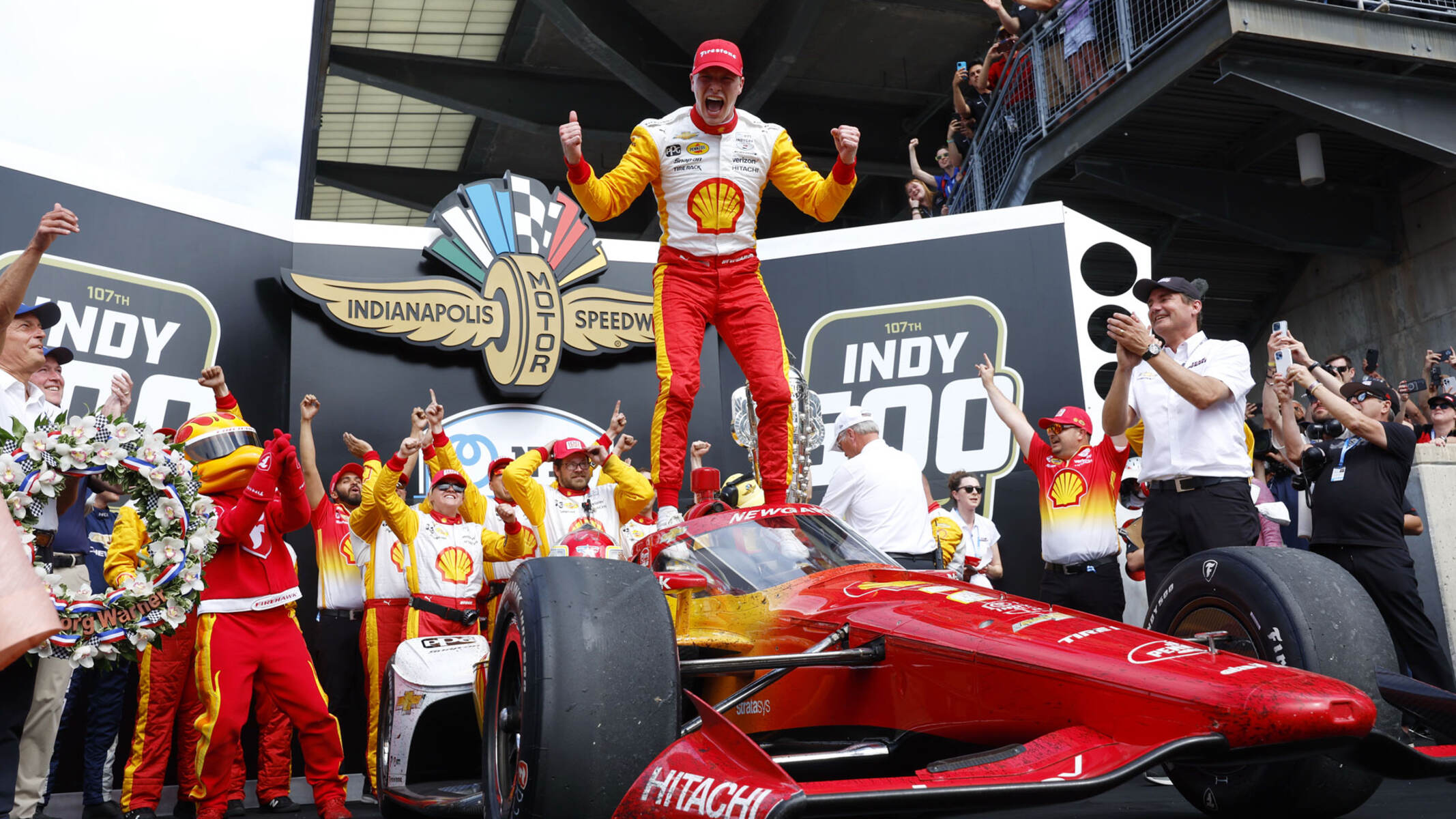
The Indianapolis 500 is an iconic and thrilling event that has captivated motorsports enthusiasts for over a century. This prestigious race, held annually on Memorial Day weekend at the Indianapolis Motor Speedway, is known as “The Greatest Spectacle in Racing.” Drawing in thousands of fans from all corners of the globe, the Indianapolis 500 is a true celebration of speed, skill, and determination.
In this article, we will delve into 15 fascinating facts about the Indianapolis 500 that highlight its rich history, impressive records, and memorable moments. From the inception of the race to legendary drivers and the evolution of the track, we will explore the unique elements that make the Indianapolis 500 an unparalleled sporting spectacle. So fasten your seatbelts and get ready to dive into the heart-pounding world of the Indianapolis 500!
Key Takeaways:
- The Indianapolis 500 is a historic car race held at the Indianapolis Motor Speedway, attracting fans from around the world and showcasing the skills of legendary drivers.
- The race features traditions like the singing of “Back Home Again in Indiana” and the iconic presentation of a bottle of milk to the winner, making it a unique and culturally significant event in American history.
The Indianapolis 500 is an annual motorsport event held at the Indianapolis Motor Speedway.
The Indianapolis 500, also known as the Indy 500, is one of the most prestigious car races in the world. It takes place on Memorial Day weekend and attracts fans from all over the globe.
The first Indianapolis 500 race was held in 1911.
The inaugural Indy 500 race took place on May 30, 1911, with a crowd of over 80,000 spectators. Since then, it has become a beloved tradition in the world of motorsports.
The race consists of 200 laps, covering a distance of 500 miles.
Drivers compete on a 2.5-mile oval track, completing 200 laps to reach the total distance of 500 miles. This endurance test pushes both drivers and their vehicles to the limit.
The winner of the Indianapolis 500 is presented with the Borg-Warner Trophy.
The Borg-Warner Trophy, weighing over 100 pounds, is awarded to the champion of the Indianapolis It is adorned with the faces of previous winners, making it a symbol of prestige and honor.
The race has seen multiple legends, including A.J. Foyt, Al Unser Sr., and Rick Mears.
The Indianapolis 500 has attracted some of the greatest drivers in history. Names like A.J. Foyt, Al Unser Sr, and Rick Mears have left an indelible mark on the race with their exceptional skills and multiple victories.
The fastest lap in Indianapolis 500 history was recorded by Arie Luyendyk in 1996.
Arie Luyendyk holds the record for the fastest lap ever completed in the Indianapolis He reached an incredible speed of 237.498 mph during a qualifying session.
The race is known for its famous pre-race traditions, including the singing of “Back Home Again in Indiana.”
Each year, before the start of the Indianapolis 500, a live performance of “Back Home Again in Indiana” takes place, creating a nostalgic atmosphere that brings fans together.
The Indianapolis 500 is one of the most attended sporting events worldwide.
With a seating capacity of over 250,000 spectators, the Indianapolis Motor Speedway fills up with enthusiastic fans who come to witness the excitement of the Indy 500 in person.
The race features a ceremonial bottle of milk for the winner.
A unique tradition of the Indianapolis 500 is the presentation of a bottle of milk to the race winner in Victory Lane. This tradition dates back to 1933 and has become an iconic symbol of victory.
The Indianapolis 500 was not held during World War I and II.
Due to the wars, there were breaks in the racing schedule, and the Indianapolis 500 was not contested in 1917-1918 and 1942-The race resumed after the conflicts ended.
The winner of the Indianapolis 500 is awarded a substantial cash prize.
Along with the prestigious Borg-Warner Trophy, the winner of the Indy 500 takes home a significant cash prize, making it a financially rewarding event for the champion.
Mario Andretti is the only driver to win the Indy 500, Daytona 500, and the Formula One World Championship.
Renowned driver Mario Andretti achieved a remarkable feat by winning prestigious races in different motorsport disciplines, solidifying his status as one of the greatest drivers of all time.
The Indianapolis 500 has a rich history of innovation and technological advancements.
Throughout its history, the Indy 500 has served as a platform for technological advancements in the automotive industry. From safety features to engine developments, the race has pushed the boundaries of innovation.
The Indianapolis Motor Speedway is the largest sports venue in the world.
Spanning over 550 acres, the Indianapolis Motor Speedway holds the title of the largest sports venue globally, providing ample space for fans, teams, and various motorsport events.
The Indianapolis 500 has become a cultural phenomenon and a significant part of American history.
The Indianapolis 500 has transcended beyond being just a car race. It has become deeply ingrained in American culture, representing the spirit of competition, innovation, and national pride.
Conclusion
The Indianapolis 500 is an iconic event that has captivated racing enthusiasts for over a century. With a rich history and a tradition of excitement, it remains one of the most prestigious and thrilling motorsport races in the world. From its humble beginnings in 1911 to its status as “The Greatest Spectacle in Racing,” the Indy 500 showcases the speed, skill, and determination of the drivers who take on the legendary Indianapolis Motor Speedway.
As the cars race around the track at incredible speeds, spectators are treated to an unforgettable experience filled with adrenaline, strategy, and heart-stopping moments. The Indianapolis 500 is not just a race, but an event that brings people together from all over the world to celebrate the thrill of motorsport.
Whether you’re a die-hard racing fan or simply curious about this legendary race, the Indianapolis 500 is an event that shouldn’t be missed. So mark your calendars and get ready to witness history being made at the next Indy 500!
FAQs
1. When was the first Indianapolis 500 held?
The first Indianapolis 500 was held on May 30, 1911.
2. What is the distance of the Indianapolis 500?
The Indianapolis 500 covers a distance of 500 miles, equivalent to 200 laps around the Indianapolis Motor Speedway.
3. Who has won the most Indianapolis 500 races?
The driver with the most Indianapolis 500 wins is A.J. Foyt, who won the race a total of four times.
4. What is the average speed of the Indianapolis 500?
The average speed of the Indianapolis 500 varies depending on track conditions, but it is typically around 220 mph.
5. How many spectators attend the Indianapolis 500?
The Indianapolis 500 attracts an average of 300,000 spectators to the Indianapolis Motor Speedway each year.
6. Are there any female drivers who have won the Indianapolis 500?
Yes, Danica Patrick became the first female driver to win an IndyCar Series race when she triumphed at the 2008 Indy Japan 300.
The Indianapolis 500 boasts an incredible history filled with legendary drivers, thrilling races, and unforgettable moments. Dive deeper into the lives of some of the most iconic figures in Indy 500 history, such as the incomparable AJ Foyt, whose remarkable achievements have solidified his place in the annals of motorsport. Discover lesser-known but equally fascinating drivers like Oriol Servia, whose unique journey and contributions to the sport are sure to captivate racing enthusiasts. And don't miss out on the chance to explore the legacy of Al Unser Jr, a true racing dynasty whose family's impact on the Indianapolis 500 is unparalleled.
Was this page helpful?
Our commitment to delivering trustworthy and engaging content is at the heart of what we do. Each fact on our site is contributed by real users like you, bringing a wealth of diverse insights and information. To ensure the highest standards of accuracy and reliability, our dedicated editors meticulously review each submission. This process guarantees that the facts we share are not only fascinating but also credible. Trust in our commitment to quality and authenticity as you explore and learn with us.


